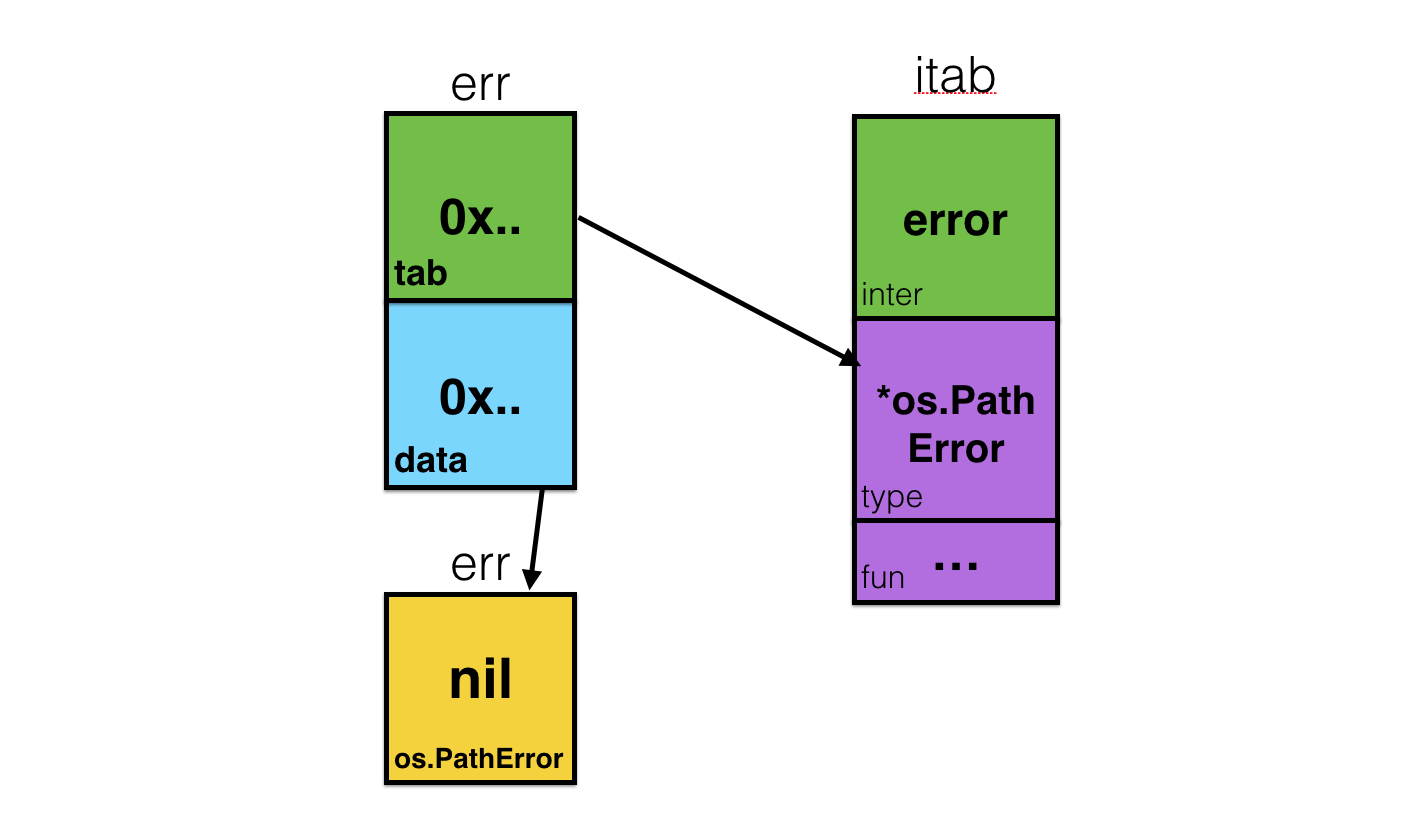Misusing error interface
I used to think that misunderstanding interfaces in Go can lead, at most, to not very readable code and worse maintainability. From my observations misusing interfaces becomes visible usually during refactorings, where you questioning what this type or abstraction actually represents. But, at least, the code tends to work and it’s not buggy.
The bug
But here is the interesting piece of code that actually was buggy:
err := SomeFunc()
if _, ok := err.(MyError); !ok {
log.Println(err)
}
Quite idiomatic, right? Error type naming is good, following recommended way to name error types and variables. We use here normal type assertion, “extracting” underlying static type from an interface. If an error doesn’t have this type inside, we should log it.
But it didn’t work. Variable ok was always true.
First, I checked SomeFunc():
func SomeFunc() error {
// case 1: we want caller to print this error
err := json.Unmarshal(data, &v)
if err != nil {
return err
}
...
// case 2: we want caller to ignore this error
err = errors.New("my error")
return MyError(err)
}
Well, it’s a bit smelly, but looks kinda ok. In the first case, we definitely do not return MyError, so type assertion should reflect this. Why was ok true in this case?
Next jump to the definition of MyError gave me an answer:
type MyError error
What??
MyError was actually an interface type! Even more - it was “synonym” for error interface!
Developer who wrote this code was assuming that
type MyError error
is the same as:
type MyError struct {
error
}
Which is more than far from the truth.
Understanding interfaces
If you do understand interfaces in Go, you will spot immediately that in a first case MyError is an interface type, while in the second case it is a concrete type.
The tricky part here is that type assertion works both with concrete and interface types - it’s ok to “extract” one interface from another. For example, you can “reduce” io.ReadCloser to io.Reader by this:
r, ok := rc.(io.Reader)
and it’s perfectly valid case. It’s in the spec:
That type must either be the concrete type held by the interface, or a second interface type that the value can be converted to.
I do believe that to truly understand interfaces you need to learn how they are implemented. I wrote a blog post some time ago with visual explanations of interfaces - “How to avoid go gotchas”. Here is a refresher picture what interface is under the hood:
 If you haven’t read it yet, please do - I’m genuinely interested in a feedback and hope my way of explaining things works for others.
If you haven’t read it yet, please do - I’m genuinely interested in a feedback and hope my way of explaining things works for others.
Now, back to our the initial code. What was happening there is following:
SomeFunc()returns error of interface typeerrorwith a static type inside different fromMyError- type assertion trying to “extract” interface
MyErrorfrom interfaceerror - as
MyErrorwas defined as the same type aserror, any variable of typeerrorautomatically satisfiesMyErrorinterface as well
Hence, type assertion err.(MyError) is always positive for any non-nil variable of type error.
Conclusion
Misunderstanding interfaces can lead to some non-obvious bugs, so it’s crucial to build a proper understanding of what concrete and interface types are in Go.
If you feel like you don’t have a clear picture, try one of my previous articles, where I tried to explain interfaces visually - “How to avoid Go gotchas”. And, as always, don’t forget the (re)read the “Effective Go”.
Also, proper testing - when you test not only happy path - would have caught this bug before it went to production.
Happy coding!